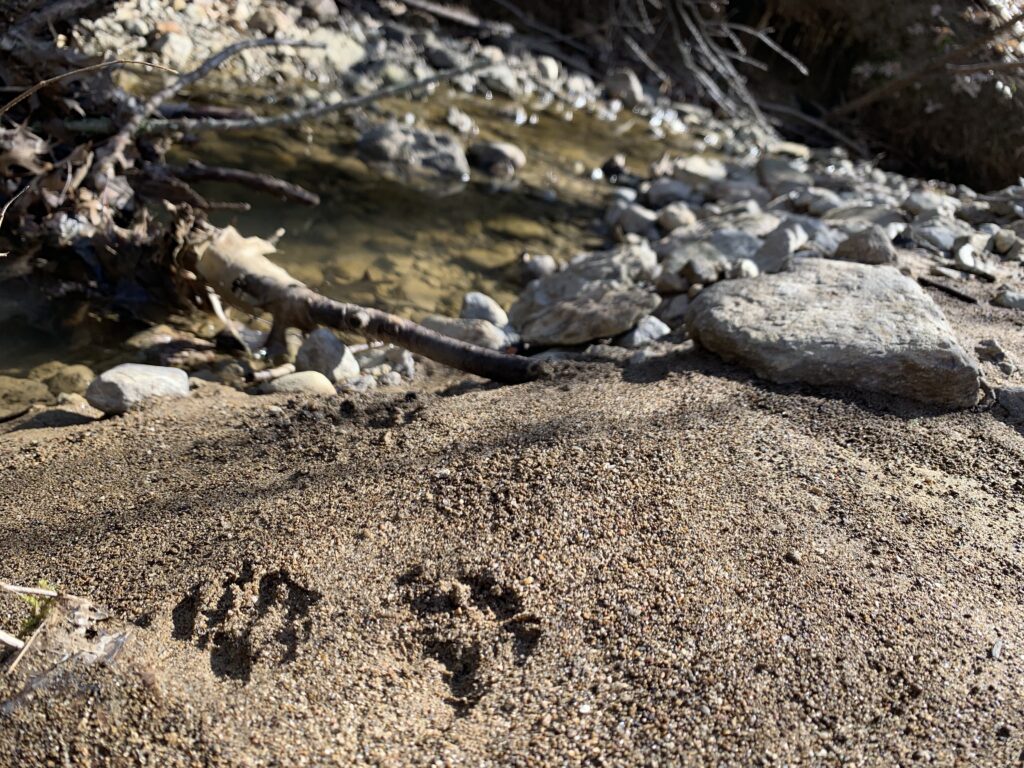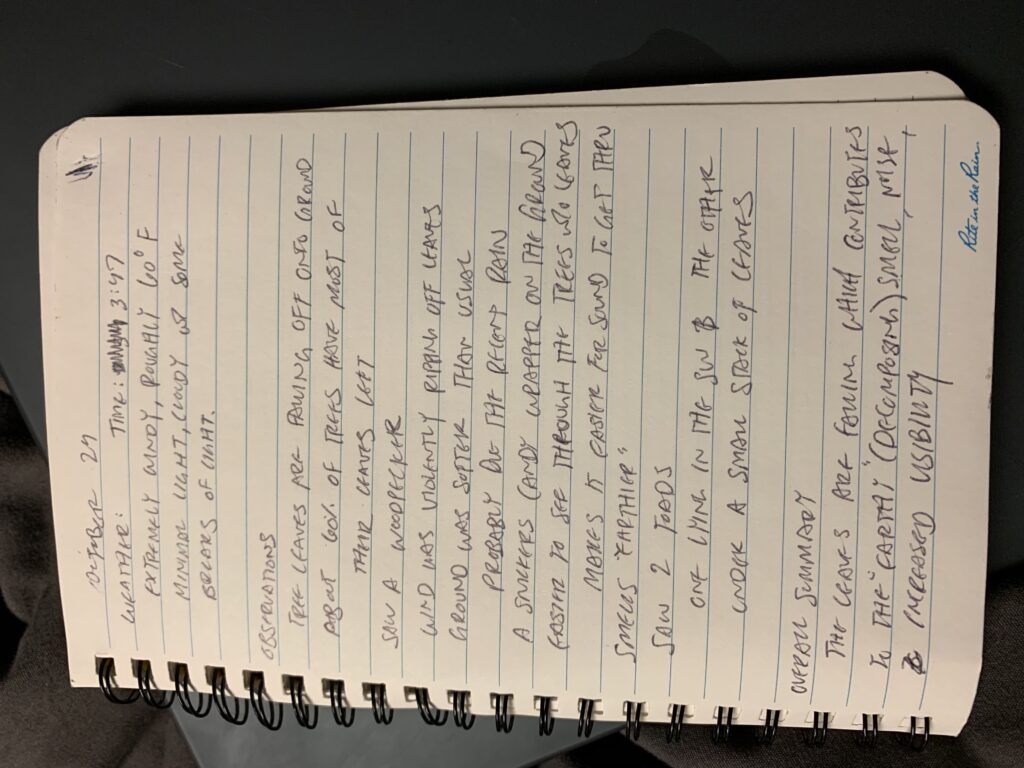Trinity Campus seems to be the Wild West to UVM students who do not live there. Trinity is not as wild or inhabitable as it may seem. In fact, we have a nice natural area right on our campus. Trinity Woods is a small area of hardwood trees that is surrounded by the old Trinity school building, McAuley Hall, Mercy Hall and the back five cottages. Between McAuley Hall and Mercy Hall along the bike path there is small gap in the trees which brings you to a lightly warn trail. Once you are on the trail, it feels like you’ve been swallowed up by the woods. The surrounding trees are so closely packed together that you cannot make out any surrounding buildings or human made structures. The sounds, however, of Colchester Avenue traffic and airplanes still penetrate the canopy. So, while the woods gives the visual illusion of complete seclusion, it does not give the same auditory illusion. As you continue down the path, you encounter a small, slow flowing creek that runs through this area. The creek provides habitat for frogs, aquatic macro bids and a source of water for nearby animal life. Birds are constantly singing in the maple, birch, beech and honeysuckle trees. Honeysuckle trees are an invasive species and take up a large portion of the woods. Because students traverse this spot so frequently, there are some traces of human interaction within the space. For example, one can find cigarette butts, names carved into trees, or a person hammocking. In my opinion, it adds character to the woods. This natural area has been socially claimed by UVM Trinity Campus students. It is a hangout spot for only those who know about it and those who know about it are Trin City kids. The woods outside my building are special to me and my living community. In conclusion, Trinity woods can provide a space for students to take a quick walk through nature and escape from their studies for a little bit. I find having a natural area so close to my living space can be refreshing and comforting.


